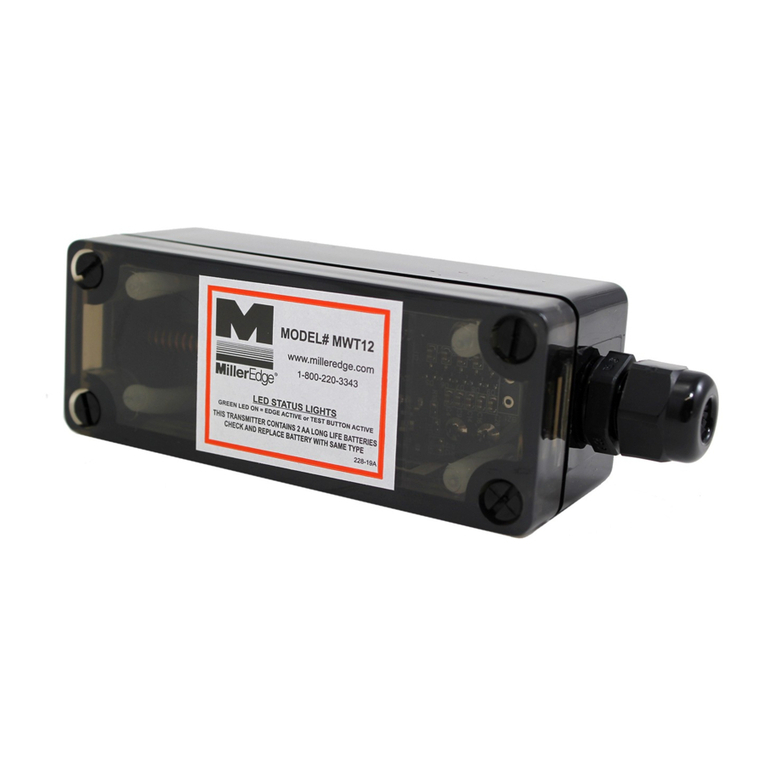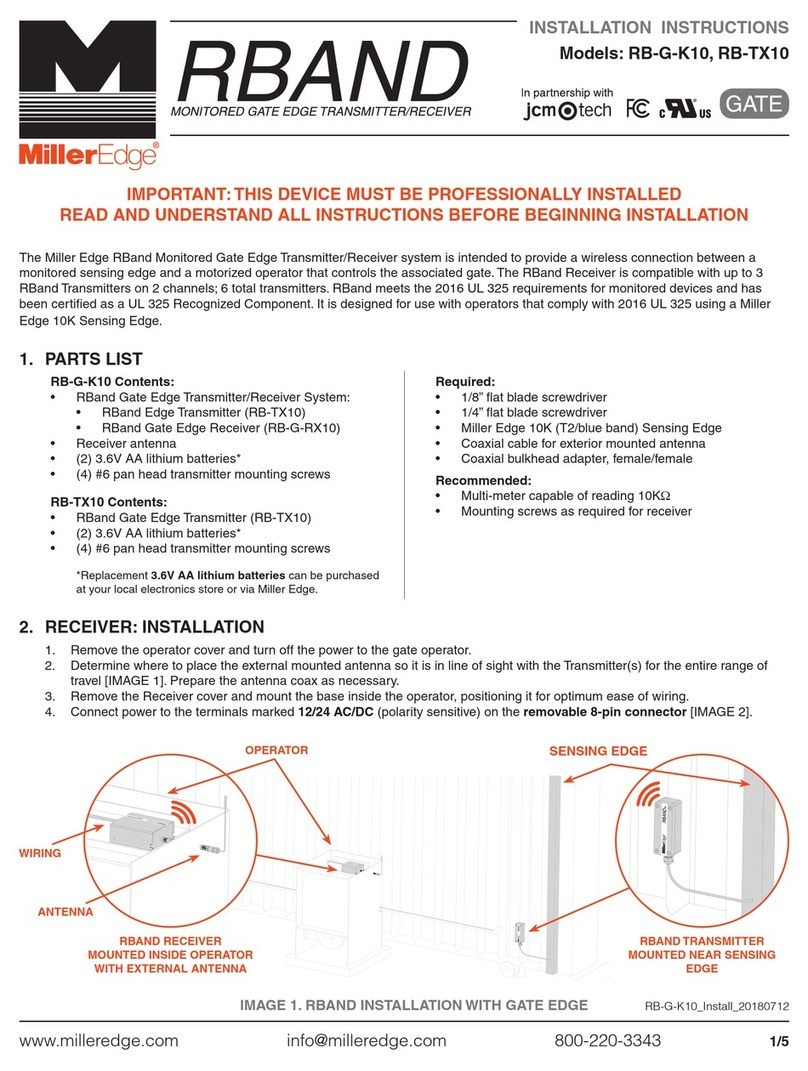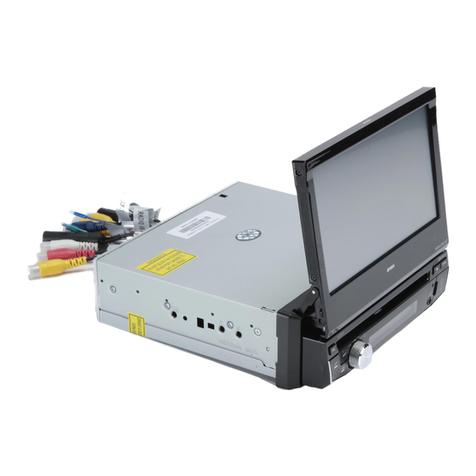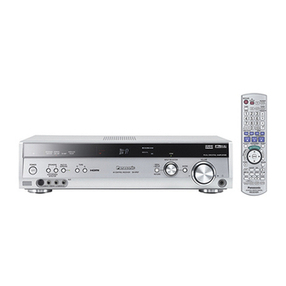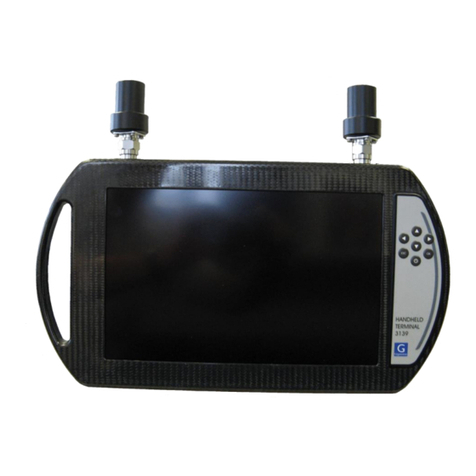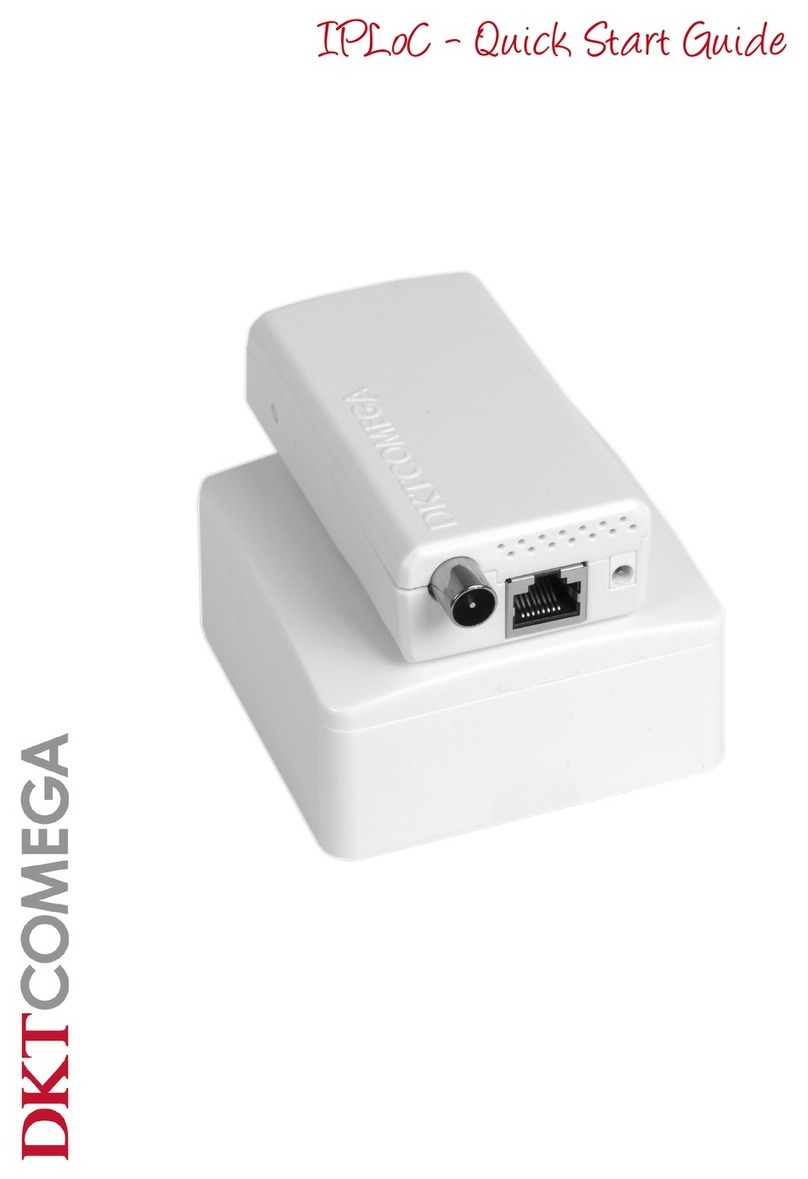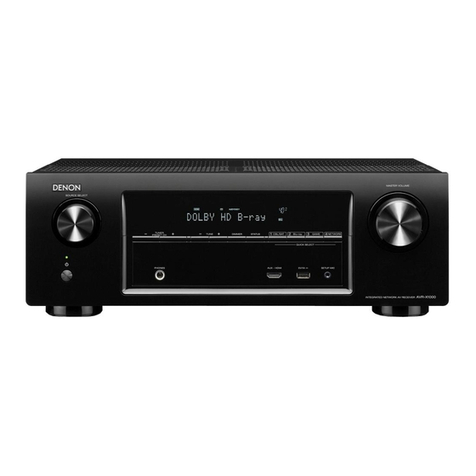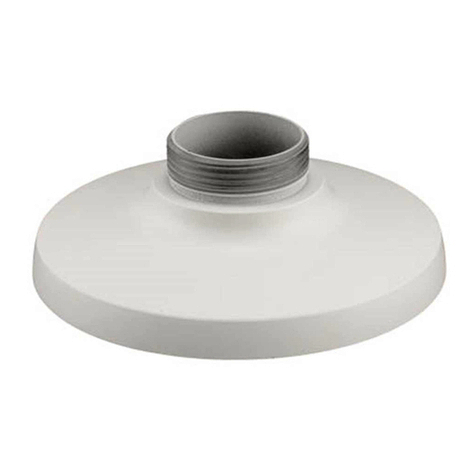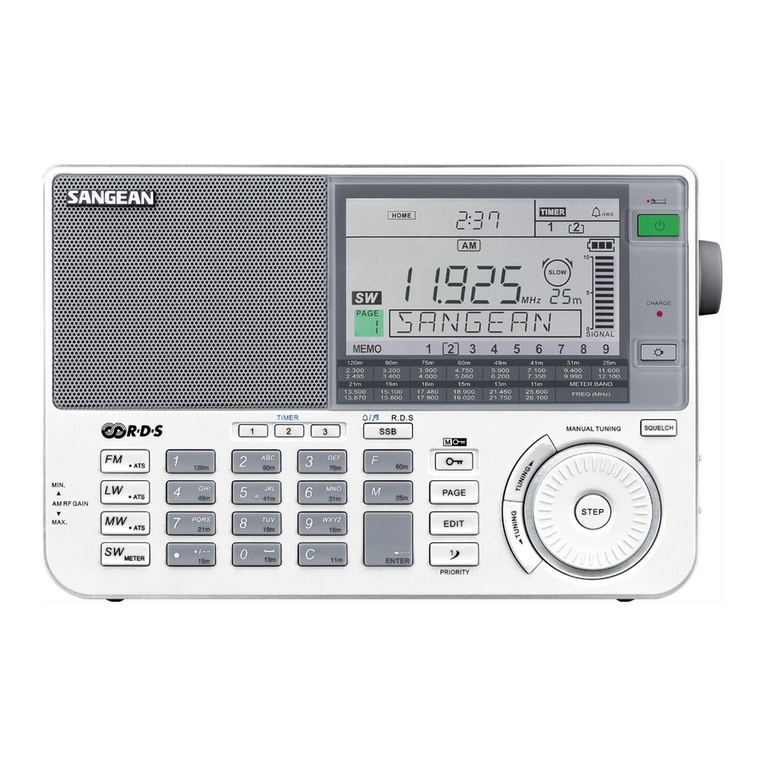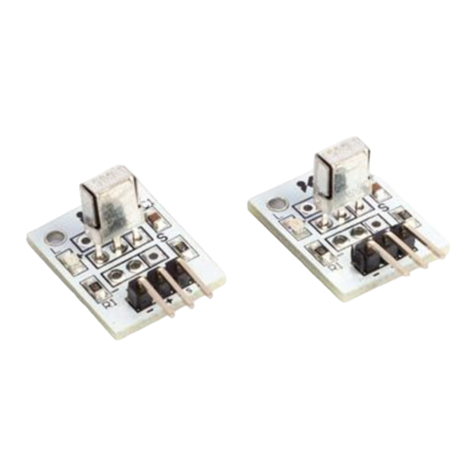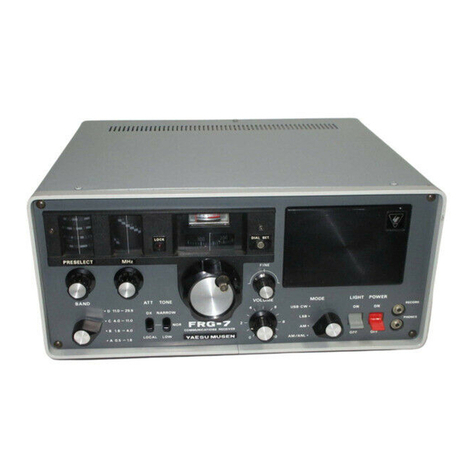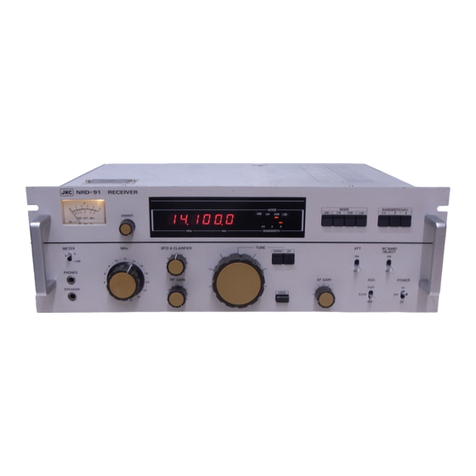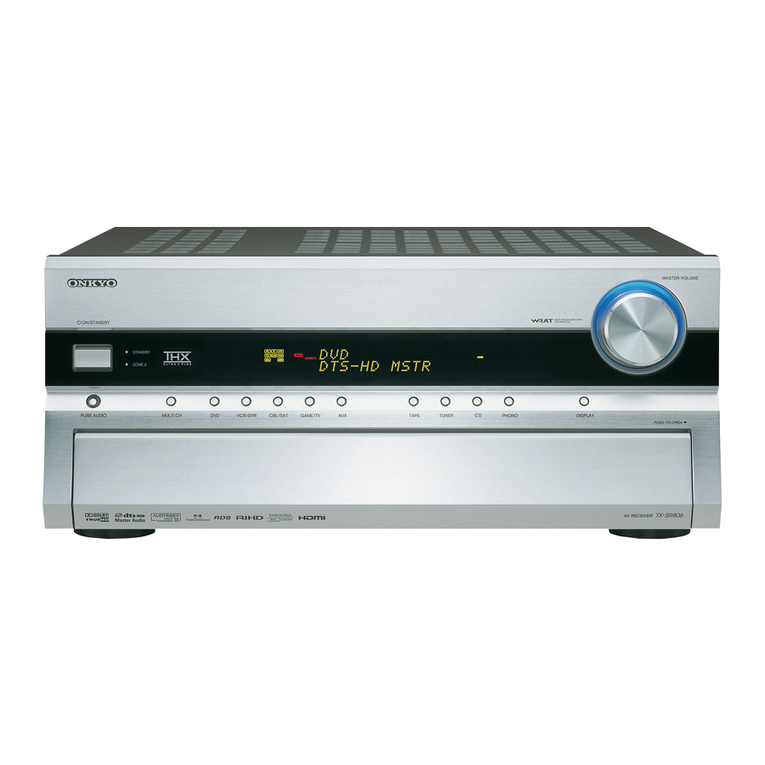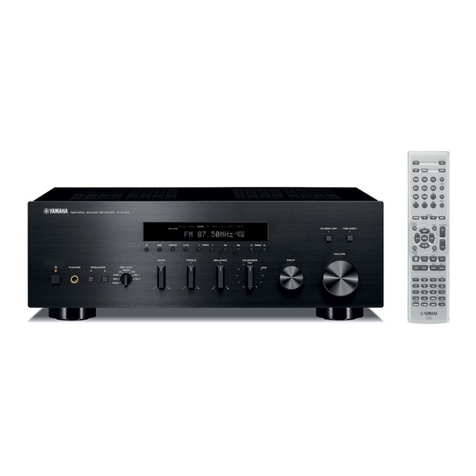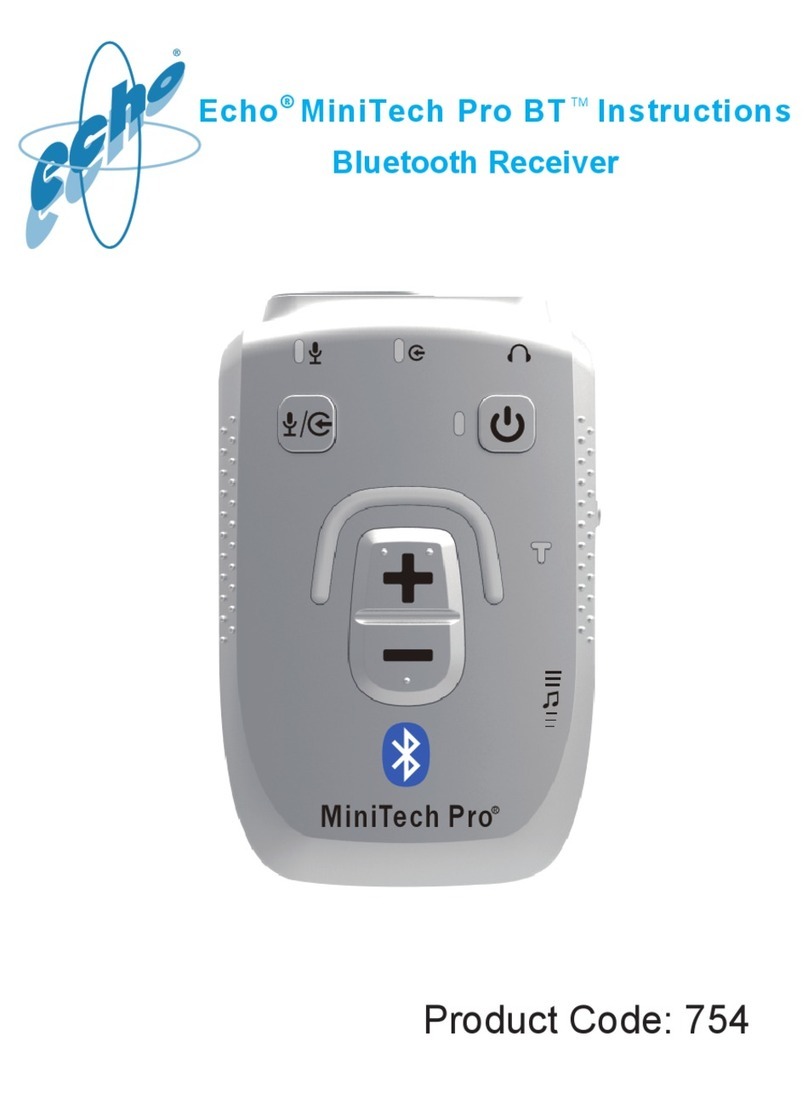Miller Edge MEL-K20 User manual

2-1. Open and unpack the antenna, batteries, transmitter
and receiver units.
2-2. Loosen screws from the top cover and remove the lid.
2-3. Remove the Transmitter PCB by pulling upward on one
of the silicone caps.
2-4. Route the wires from the monitored edge through
the strain relief cable fitting for approximately four inches.
Strip the insulation from the two wires back ¼” and secure
the wires in the terminal block marked SE 1. (Not olarized.)
A Knockout (K.O.) switch may be wired to the Tx terminal
strip marked KO. (Either normally o en or normally closed
switches may be used.)
2-5. Place the two AA Lithium batteries in their holders in the
proper direction, paying attention to the (+) and (-) ends.
2-6. Tuck the wires connected to the SE terminal block neatly
between the batteries and pull the excess wire back
through the strain relief.
Re-seat the PCB in the case, and securely tighten the
cable fitting.
2-7. Set the Termination Type switch to either 10K or DC.
(see Appendix) This selection must match the
Termination Type in the Safety Edge.
2-8. Address Switches
Set the Group (red) and Address (blue) switches to the
desired position. (Note the settings for reference when
setting up the Receiver.)
If the Group switch is set to 0, the Address switch may be
set to any position between 0 and F.
If the Group switch is set to 1, the Address switch may be
set to any position between 0 and B.
(The remaining ositions, C, D, E, and F are reserved for
factory test.)
P.O. Box 159 • West Grove, PA 19390 • 800-220-3343 • 610-869-4422 • Fax: 610-869-4423 • www.milleredge.com
6809 South arl Ave., Suite A • Tempe, AZ 85283 • 800-887-3343 • 480-755-3565 • Fax: 480-755-3558 MEL-K20_Inst_20140708
Model # MEL-K20
INSTALLATION INSTRUCTIONS
IMPORTANT:
READ AND UNDERSTAND ALL INSTRUCTIONS BEFORE BEGINNING INSTALLATION.
Parts List
Kit Contents:
1. MEL-TX20 Transmitter Unit
2. MEL-RX20 Receiver Unit
3. Receiver Antenna
4. (2) AA Lithium Batteries
5. 3 ft. 20 AWG lead wire
6. (4) #6 Pan ead Transmitter Mounting Screws
1-
PART NUMBER
2- Install Transmitter and Test
The Monitored Edge Link (MEL) transmitter/receiver system is intended to provide a wireless connection between
a monitored safety edge and a motorized operator that controls the associated door or gate. MEL meets the
UL-325/2010 requirements for monitored devices and has been certified as a UL325 recognized component.
It is designed for use on operators that comply with UL325-2010 using a T2 or T3 terminated edge sensor.
Required:
1. 1/8” Flat blade screwdriver
2. 1/4” Flat blade screwdriver
3. T2 (10K/Blue Band) or T3 (Diode-
Capacitor/Red Band)Terminated Sensing Edge
Recommended:
VOM for test purposes
Mounting screws as required for receiver
TOP LID
SCRE S
TRANSMITTER
PCB
TEST BUTTON
TERMINATION
SELECTION
SILICONE
CAP (4)
STRAIN RELIEF
FITTING
(2-6) EDGE IRING TO
TERMINAL BLOCK
MEL-K20_Inst_20140708_WPE Instuctions 7/16/14 12:01 PM Page 1

P.O. Box 159 • West Grove, PA 19390 • 800-220-3343 • 610-869-4422 • Fax: 610-869-4423 • www.milleredge.com
6809 South arl Ave., Suite A • Tempe, AZ 85283 • 800-887-3343 • 480-755-3565 • Fax: 480-755-3558
2-9. Momentarily press the TEST button. The Green Tx Data LED should flash.
(The Red Low Battery LED will only light when the batteries fall below 2.4v.)
2-10. Mount the Transmitter to the door or gate using #6 - 20 x 3/4” self-drilling screws.The mounting holes are
located under the Top Lid Screws. Mount the transmitter with the wire strain relief facing down or to the side.
2-11. Replace the cover on the Transmitter and tighten the screws taking care to align the lid.
*Note the alignment in located in the u er left corner.
3- Install Receiver and Test
3-1. Remove lid of the Receiver Unit.
3-2. Set the Group (red) and Address (blue) switches to
match the transmitter settings.
3-3. Mount the receiver close to the operator and in-the-line-of-sight
of the transmitter using the mounting holes, as shown.
3-4. *Connect the receiver’s PE (Photo-Eye) output to the operator’s
PE input terminals using Green and White wires.
(Operator terminal label naming may differ. Contact factory for
support).
3-5. Connect the Black and Red wires to a 12 or 24V ac/dc source.
3-6. Attach the antenna to the receiver RF board.
3-7. Prel m nary Test :
Confirm that the Transmitter and Receiver are powered ON.
Activate the Safety Edge (or monitored device).
The Address Valid Yellow LED on the Receiver should
flash momentarily.
If the Address Valid LED does not flash, check that the
Group and Address switches match the transmitter
settings. Confirm that the Photo-Eye and Safety Edge
LEDs are lit while the safety edge is held active.
Note that the Photo-Eye and Safety Edge LEDs
go OFF when the Edge is released.
3-8. Replace the Receiver Lid taking care to slip
the Antenna through the lids’ grommet.
*Certain installations may require an alternative wiring
scheme. Please consult factory for assistance.
4- Safety Test
4-1. While moving the door in the downward direction
or the gate in the desired direction, momentarily
activate the Safety Edge and confirm that the
door or gate stops and reverses direction.
(4) CORNER
MOUNTING HOLES
LID
ANTENNA
MOUNTING
TABS (2)
RECEIVER
ENCLOSURE
FIGURE (3-4)
MEL-K20_Inst_20140708
MEL-K20_Inst_20140708_WPE Instuctions 7/16/14 12:01 PM Page 2

P.O. Box 159 • West Grove, PA 19390 • 800-220-3343 • 610-869-4422 • Fax: 610-869-4423 • www.milleredge.com
6809 South arl Ave., Suite A • Tempe, AZ 85283 • 800-887-3343 • 480-755-3565 • Fax: 480-755-3558
5- Specifications and Controls: Transmitter Unit
Address ng Sw tches: Addressing codes allow for multiple transmitters to operate on the same frequency in close
proximity. See installation section of this manual.
Frequency: Standard frequency: 315 M z.
Ind cator L ghts- Tx:
Green LED: Tx Data, Flashes upon activation and release of the external safety device to indicate
transmission.
Low Battery: Red LED. Flashes as a warning during transmission when the battery voltage is below 2.4v.
All transmission ceases below 2.3v.
Mount ng: 4 corner screws (provided)
Power Source: Batteries: 2 AA, 1.5v Lithium* or Alkaline
*Recommended for extended life in rolonged cold environments. Life ex ectancy: 1 yr.
D mens ons: 1.80” w x 4.78.” h x 1.75”d
Term nat on Sw.: Selects termination type of the monitored device as 10K resistive or 9.1v Diode.
Test Button: Momentary push button – Forces the transmission of the transmitter's address and sensor status.
Also; Loads an address change when the addressing switches are altered.
6-Specifications and Controls: Receiver Unit
Power: 12v-24v ac/dc nominal (8-30v max). Power may be supplied from the operator or alternatively from an external supply.
Cable Entrance: Grommet for .15” - .2” diameter cables.
Cable Connect ons: Screw clamp type terminal blocks for 18 - 26 awg wire.
Address ng: Group Switch: 2 position slide switch, selectable as “0” or “1”.
Address Sw tch: Selectable from 0 – 9 and A – F (See Address setting in the Tx setup section.)
D mens ons: 4.00”w x 4.74”h x 1.00”d
Ind cator L ghts - Rx:
Address Valid: Yellow LED: Indicates reception of message with our selected address.
PE Interrupt: Red LED: Indicates Safety Device is active. Photo-Eye output pulses are inhibited.
If Flashing: Indicates a transmitter safety edge termination error is sensed.
SE Active: Green LED: Indicates Safety Device is active.
KO: Green LED is ON when Tx Knock Out input is active.
Low Battery: Green LED–Blinking: Tx battery is below 2.4v, and above 2.3v.
Green LED–Steady: Tx battery is 2.3v.
Ping Loss: Indicates the periodic Tx signal is lost.
Outputs:
PE Output: Pulse stream output to door operator’s Photo-Eye input (Compatible with all UL-325/2010 listed commercial
operators. Check Operator Listing.)
SE Output: SPDT relay contacts, NO, NC, and Com outputs. (See optional Termination Types)
The pulse stream stops and the relay activates when any of the following occurs:
1. Safety device activation
2. Open or unconnected safety device
3. Bad or missing safety device termination
4. Low Battery
5. Loss of Tx radio signal or ping loss
Termination Type: 10K resistor, 9.1v Diode, NONE: Selectable by PCB Jumper/ eader P2
KO Output: SPDT relay contacts, NO, NC, and Com outputs
Low Battery: SPDT relay contacts, NO, NC, and Com outputs
MEL-K20_Inst_20140708
MEL-K20_Inst_20140708_WPE Instuctions 7/16/14 12:01 PM Page 3

P.O. Box 159 • West Grove, PA 19390 • 800-220-3343 • 610-869-4422 • Fax: 610-869-4423 • www.milleredge.com
6809 South arl Ave., Suite A • Tempe, AZ 85283 • 800-887-3343 • 480-755-3565 • Fax: 480-755-3558
Transm tter:
MODEL: MEL-TX20
FCC ID: OYE-MEL315
T IS DEVICE COMPLIES WIT PART 15 OF T E FCC RULES. OPERATIONS IS SUBJECT TO T E FOLLOWING
TWO CONDITIONS.
1) T IS DEVICE MAY NOT CAUSE ARMFUL INTERFERENCE
AND
2) T IS DEVICE MUST ACCEPT ANY INTERFERENCE RECEIVED INCLUDING INTERFERENCE T AT MAY
CAUSE UNDESIRED OPERATION.
8- FCC Compliance
Rece ver:
MODEL: MEL-RX20
This equipment has been tested and found to comply with the limits for a Class B digital device, pursuant to Part15 of the FCC Rules.
These limits are designed to provide reasonable protection against harmful interference in a residential installation. This equipment
generates, uses and can radiate radio frequency energy and, if not installed and used in accordance with the instructions, may cause
harmful interference to radio communications. owever, there is no guarantee that interference will not occur in a particular installa-
tion. If this equipment does cause harmful interference to radio or television reception, which may be determined by turning the
equipment off and on, the user is encouraged to try to correct the interference by one or more of the following measures:
1- Re-orient or relocate the receiver antenna
2- Increase the separation between the equipment and the receiver
3- Connect the equipment into an outlet on a circuit different from that to which the receiver is connected.
4- Consult the dealer or an experienced radio/TVtechnician for help.
Changes or Modifications Not Expressly Approved By The Party Responsible For Compliance Could Void The User’s
Authority To Operate The Equipment.
7- Appendix:
Miller Edge Terminated Sensing Edge Color Coding:
T2 10K Resistor (Blue band)
T3 Diode/Capacitor (Red band)
* Colored ID tape is located on the Sensing Edge cable.
Alarm Power Sw tch: Provides for connection of optional audible or visual alarm when transmitter battery is low.
Optional: Dry contacts, or +5vdc @ 20 ma. (max) available on the NO & NC relay contacts.
The Low Bat relay is active when the “LOW BAT” LED is
flashing or on steady.
With alarm power switched “ON”, you will have 5VDC
available on the “LOW BAT” terminal between NC & NO.
With alarm power turned “OFF”, you will have dry relay
contacts available on the “LOW BAT” terminals.
MEL-K20_Inst_20140708
MEL-K20_Inst_20140708_WPE Instuctions 7/16/14 12:01 PM Page 4
This manual suits for next models
2
Table of contents
Other Miller Edge Receiver manuals
